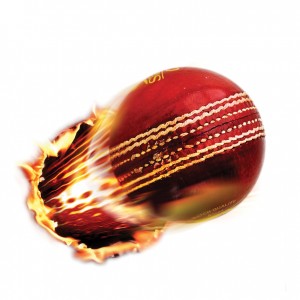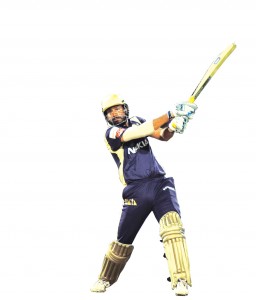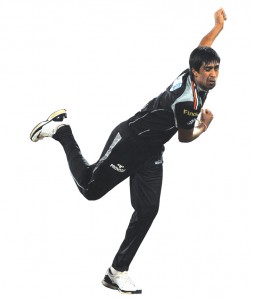 As the month of May draws to a close, so does the sportaintment carnival that IPL is. A two-month long cricketing jamboree, besprinkled with the extravagant elites and the glamorous Bollywood celebs to up the oomph factor, IPL has been a rollercoaster ride with the troughs far outnumbering the crests.
As the month of May draws to a close, so does the sportaintment carnival that IPL is. A two-month long cricketing jamboree, besprinkled with the extravagant elites and the glamorous Bollywood celebs to up the oomph factor, IPL has been a rollercoaster ride with the troughs far outnumbering the crests.
The Origins
The provenance of the IPL is premised on the emergence of the rebel T20 cricket league – The Indian Cricket League. The Board of Control for Cricket in India (BCCI) seeing the copious amounts of apostates in the domestic and veteran circuits ready to jump ships in the lure of heavier pockets, initially responded rather immaturely with severe sanctions. Having now fully appraised the very threat to its iron grip on the reins of Indian Cricket, the BCCI through its maverick Vice President Lalit Modi responded with the IPL, a professional 20-20 cricket league, one that promised to be the glitziest of all sporting shindigs. The IPL quickly signed up some of the world’s greatest players onto its roster. With the delicate intrigue of the auction packaged with flamboyant owners, the IPL seemed a winner. The city-based formats whipped up the desired frenzy and the player auctions ensured top billing in the media. The mind-boggling sums of money did no harm to its burgeoning popularity in a country obsessed with figures. Player salaries skyrocketed. Cricket sycophants boasted that India now had a product that was comparable, at least financially, to the English Premier League.
The Formative Seasons
The inaugural seasons of the IPL lived up to its billing. Brendon McCullum and the Kolkata Knight Riders exploded on to the stage when they hammered Vijay Mallya’s Royal Challengers Bangalore in the opener. The first season was capped by a cliff hanger on the field where the underdogs, Rajasthan Royals beat Chennai Super Kings in a cliff-hanger of a finale.
The stellar level of cricket was well complemented/distracted by theenchanting bevy of beauties sensually grooving to the tracks belted out by international DJs. Celebrity spotters had a field day; the IPL was one forum where the whole array ranging from the Bollywood star to the fading, decrepit socialite could find acceptance. The fact that the sudden exposure to international shores – South Africa – in the second season, straight from the incubator back in Indiacaused no freckles and to the contrary enhanced the league’s reputation was testimony to the fact that the IPL had made the transition from a domestic tournament to a global athletic pursuit. The revitalised movement to sneak cricket into the Olympics gained further impetus.
 The Grandest Stage of All
The Grandest Stage of All
The IPL was fast being used to catapult into the senior national team from the innocent confines of the U-19 Indian team or local leagues. This springboard paid great dividends of the loyal toilers of the Ranji league who fail to attract attention in the monotone of domestic cricket.
Ravichandran Ashwin, Ravindra Jadeja, Rahul Sharma, Ashok Dinda and Yusuf Pathan were a few who piggybacked from near obscurity to limelight on the back of strong and vigorous IPL display.
If you want to get acquainted with a pressure cooker situation, IPL is the place. IPL has sparked of a global breed of cricketers who are blasé in the face of daunting challenges or inflated expectations. They might be short on footwork and batting techniques but never devoid of self confidence and bullishness.
The chance to learn from cricketing legends is also unparalled. Virat Kohli was sharing a dressing room with Jacque Kallis. John Buchanan, the coach who has won a hat trick of world cups, was imparting valuable words of wisdom to Ashok Dinda. The cricketer you idolised and modelled your game upon was now literally a request away. This amiable atmosphere helped nourish and mould some of the most prodigious talents in the game today.
Financial Betemoth
The IPL in a way has been an embodiment of the stunning capitalist growth unravelling in the country. The mind-boggling numbers involved have given premium sports franchises a run for their money. It ensured windfall gains for the BCCI. At the start of only it’s second season a report by a UK-based consultancy pegged the IPL’s worth at over $4 billion. The commodity has successfully found its own space in the world of clogged cricket calendars ensuring the biggest attraction at every season. Its popularity extends well beyond the peripheries of the cricket-crazy subcontinent .The various slavish leagues subsequently announced by other cricket boards is tribute to the ingenuity of the league. It has sparked its own niche industry. The IPL has been mighty successful in making cricket a more acceptable game throughout the masses. While test cricket had a limited loyal base in the purists and the ODI appealed to the proletariat, the IPL has been able to transcend these barriers. It has not only made the game more palatable with the fairer sex, but has severely dented the profits of the stale family dramas which not long ago ruled the roost.
 Controversy Magnet
Controversy Magnet
The IPL has been the nursing home for several controversies, which have largely taken off the sheen of the league. The slapgate controversy was a poor example of sportsmanship and later trickled down to the festering ugliness in the Indian cricket team.
The late night after-match parties brought to notice the lascivious tone the league had adopted and brought the league serious public disrepute. The league has also been mired in financial scandals with serious allegations of tax evasions, money laundering and presence of nefarious elements in the ownership structure being levied. The Enforcement Directorate has been on its case and with fresh revelations being made on a weekly basis, the league is certainly not deprived of bad press. The unceremonious circumstances which not only pilloried a Union minister for State, Shashi Tharoor but also guillotined the League’s founder Chairman, Lalit Modi, called into question the league’s probity or lack of it. Allegations have been levelled on auctions being fixed, contracts been manipulated and illicit dealings. The Madras High Court has taken a strong stand on the issue and has made its displeasure clear at IPL being allowed to evade entertainment task under the guise of being public entertainment while tickets command at exorbitant rates. The present IPL is a decisive and critical one. Now that the novelty has rubbed off, whether the league will be able to hold its own and still enchant viewers is of significant importance. The teams have had sufficient time to build up a loyal supporter and sponsor base. Whether the success of the Indian Cricket team at the international stage in anyway fuels the massive glory of the IPL will also be observed. What we can expect is a month and half of some slam bang cricket laced with appropriate amount of glamour and speculation to keep the tabloids happy.
The IPL is — at its best — an extraordinary attempt to further exemplify the glory of cricket demonstrated in the last decade. Following the footsteps of EPL, the IPL has turned out to be an extremely fascinating, entertaining phenomenon, albeit on a slightly smaller scale. The thrill of T20 encounters, coupled with the explosive stadium atmosphere as well as the novelty involved in watching players from different countries team up together, all add up to make IPL one of the mega-events to look out for, every year!
It is sad, however, to witness that Pakistan has been left out for purely political reasons. Sports are a bridge towards better international relations, not a means to apply pressure. Same goes for the revelation of scams and money siphoning in the course of bidding. It brings to mind several doubts about India being ready to host a tournament of such mammoth proportions.
In terms of overall impact to the game, the IPL may have taken some sting out of classic international ODI or test series, but that is only a sign that we are gradually shifting to a new paradigm. The three-hour format of the game does impact the player’s mindset drastically, but as a spectator, it’s nothing better than wholesome entertainment. Maybe it’s not too far-fetched to believe there will be more Mumbai Indians fans than Chelsea ones someday. Who knows?
Pratik Mehta, FE, DJ Sanghvi
IPL has become an out and out business. Its pros are that it increased the international exposure for Indian players and has given them greater monetary gains and recognition, but it has all come down to a country vs. club debate that never, ever existed before.
It has led to people retiring from longer versions of the game. People performing in IPL are given better opportunities than seasoned Ranji players. If you don’t have the attacking power, you are just not considered, so test cricket is the only parameter to judge who a true batsman or bowler is, not a twenty20 match. With all its hype and fever, I guess one day it will just take down the international arena to an all-time low, which is not good for the sport.
Club/country dilemma has led players to perform for their respective IPL teams and to underperform on the international arena; the prime examples of this are Malinga and Rohit Sharma. As a fan, I am alarmed and quite saddened to see this downfall in terms of country matches. The football system is not preferable; it’s a different ball game and you can’t merge all three forms of the game at club level.
Russel Shah, First year engineering student
R Ashwin, Ravindra Jadeja, Rahul Sharma , Ashoke Dinda and Yusuf Pathan are some of the few who piggybacked from near obscurity to limelight on the back of strong and vigorous IPL display.
The IPL has been mighty successful in making cricket a more acceptable game throughout the masses. While test cricket had a limited loyal base in the purists and the ODI appealed to the proletariat, the IPL has been able to transcend these barriers.
Volume 1 Issue 11



























